Several months ago, I came across something in Bucharest that was so unexpected and so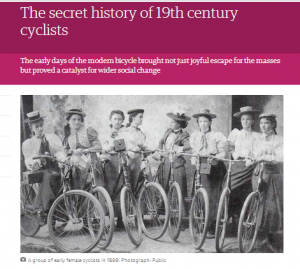 much fun that I was thinking to write a blog post about it. Until, that is, after a bit of effort, I was able to convince myself no one would find it interesting. So I eagerly and happily relieved myself of the chore.
much fun that I was thinking to write a blog post about it. Until, that is, after a bit of effort, I was able to convince myself no one would find it interesting. So I eagerly and happily relieved myself of the chore.
Then several weeks later came an article in The Guardian titled “The secret history of 19th century cyclists” and, well, I decided maybe I was wrong. (Never had I realized the bicycle was such an important feminist tool.)
Still, I let it go. No one would know. Then The New York Times crept up with a story last month about the history of bicycling and the fact that some of its history was being enshrined in an ex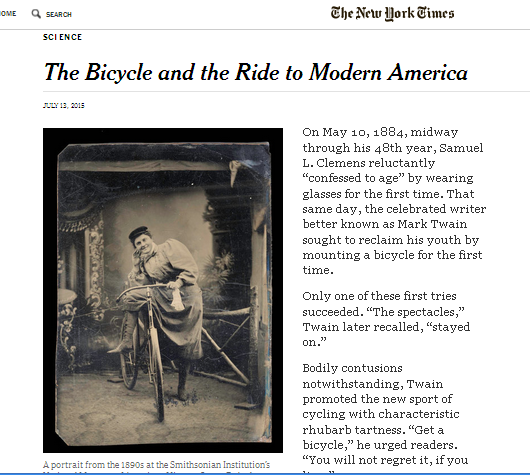 hibit at The Smithsonian Institution in Washington, D.C. It seems the great American suffragette Susan B. Anthony (of the disastrous one-dollar-coin fame) once said cycling did more than anything else to emancipate women. (Apparently it was related to giving women the freedom to shop more quickly, or something like that.)
hibit at The Smithsonian Institution in Washington, D.C. It seems the great American suffragette Susan B. Anthony (of the disastrous one-dollar-coin fame) once said cycling did more than anything else to emancipate women. (Apparently it was related to giving women the freedom to shop more quickly, or something like that.)
So, it seems, the world wouldn’t leave my laziness alone.
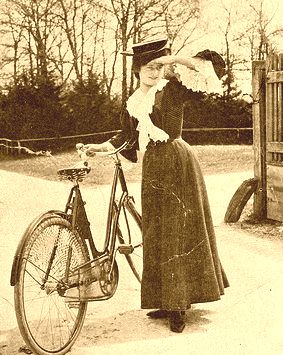
Maria Mihăescu, nicknamed Miţa Biciclista, pictured here in an undated photo from the late 1890s or early 20th century.
But that’s not why I’m finishing this post. No. Not really. I’m finishing it because I don’t think I’ve lived anywhere else in the world that would have placed a plaque on an old house in the middle of a city for a woman who accomplished what this one did. And I thought you should know.
The woman I refer to is Maria Mihăescu, otherwise known as Miţa Biciclista. Now, for you Romanians out there, I know I run the risk of prompting a laugh, announcing I’ve just discovered something like coal in Newcastle. But to you non-Romanians (and you know who you are), you too might find this as interesting as I. (And as a bonus for persevering, I’ll teach you a sweet little nursery rhyme at the end that you can sing to your kids.)
Now, I don’t want to boast, but I’ve lived in Bucharest for six years and I’ve visited maybe three museums already. Well, two, if you don’t count the Museum of Peasants where I only go to the gift shop. (I’m told the rest of the place is very nice.) I walk a couple miles most days and more than twice I have stopped to know where I am. The fact is I still marvel at everything, even though I stop to read nothing. To be very honest, I’ve probably read just a handful of plaques the entire time I’ve lived here. You know the ones I mean – those square engraved stones on the front of houses that announce for history that “the guy who lived here for three weeks in 1862 was rich and a dentist.” (See one 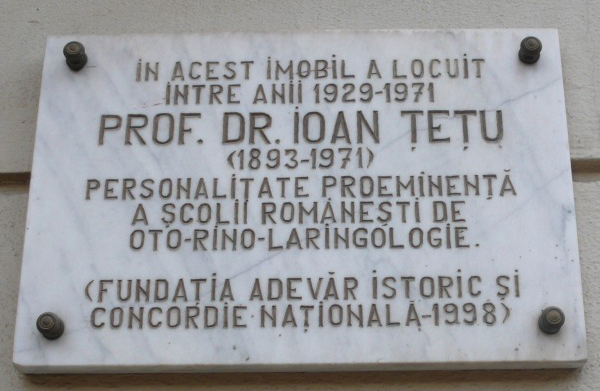 pictured nearby. He was apparently a “prominent personality” when he didn’t have a flashlight up your nose.)
pictured nearby. He was apparently a “prominent personality” when he didn’t have a flashlight up your nose.)
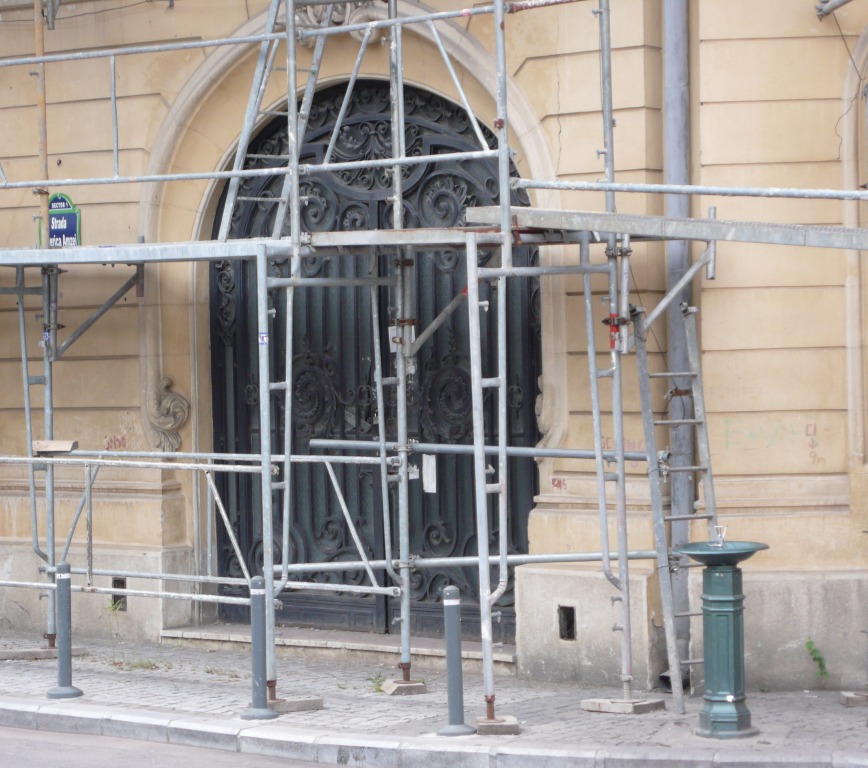
The fountain, outside her front door.
But back to my story. So there I was, ridiculously early for a meeting on a hot afternoon in a neighborhood in Bucharest that I thought I knew well. To kill some time, I needed to wander. A lot. Slowly. (Did you know there’s a water fountain stuck right in the sidewalk at the corner of Strada Biserica Amzei and Strada General Christian Tell? Neither did I.) And, lo and behold, I found myself a plaque.
“Miţa,” it said, “the Cy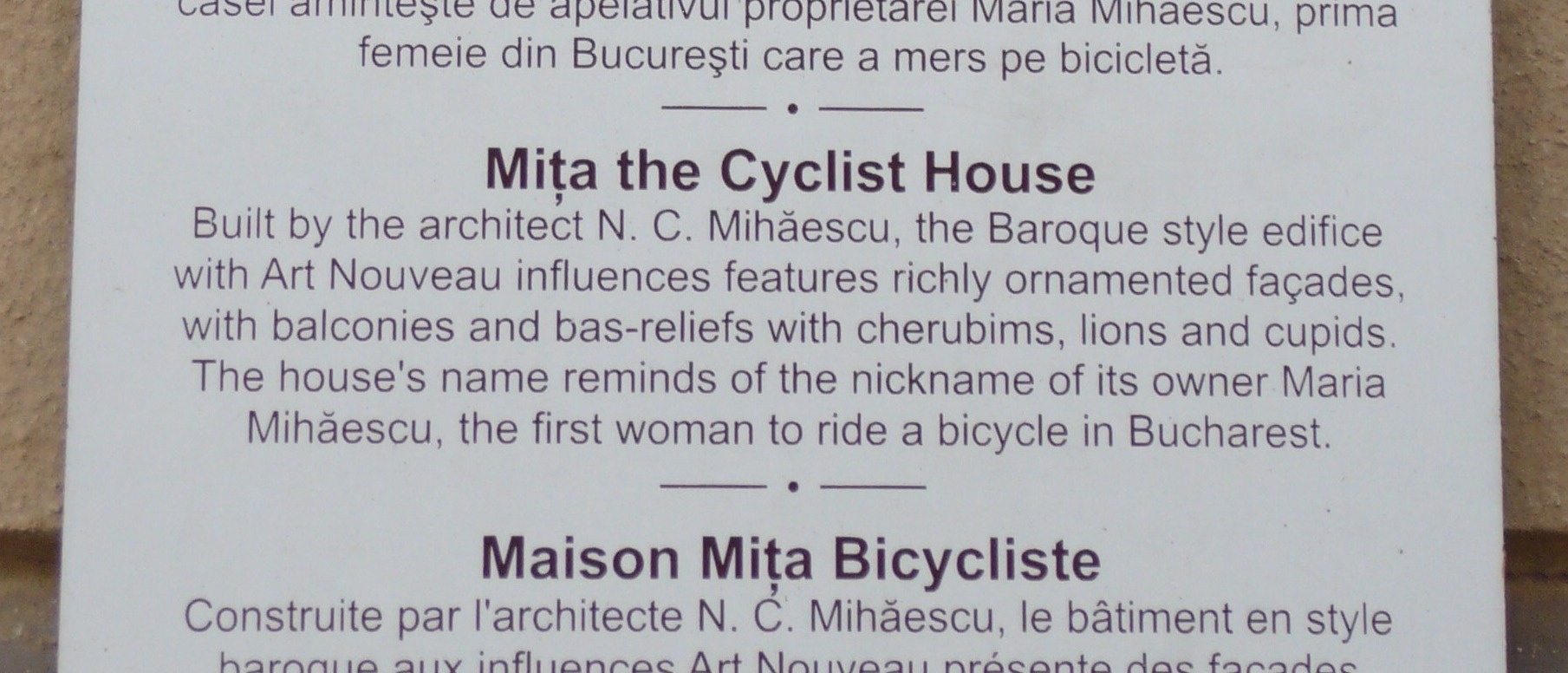 clist House.”
clist House.”
At first, I thought this was only slightly interesting. They made bicycles here, or maybe Miţa, (pronounced: meetza) whoever that was, had been in the circus. But then I reached the end of the sentence: “…the first woman to ride a bicycle in Bucharest.”
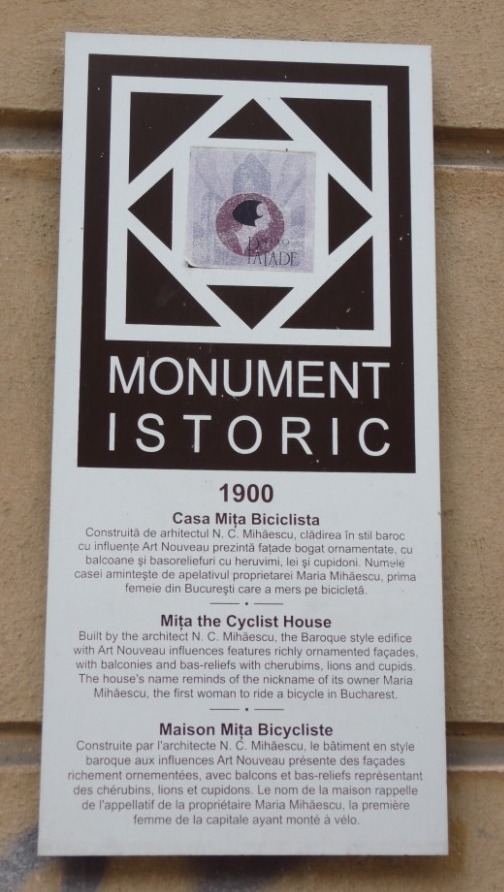
The plaque.
Well, well. How about that? People back then sure had a lot of time on their hands, I figured. They must have been sitting outside their homes every evening waiting for someone to go by, just like now when you get eyeballed by those lines of friendly stone-faced citizens in all of those villages that you find yourself crawling through so you don’t get a ticket as everyone who lives there is sitting on wooden benches out by the road so they can stare at the strangers and feed the mosquitoes.
Yes, that must be what happened: In the sleepy streets of Bucharest one evening before 1900, all of a sudden, one old guy says to another: “Was that a woman who just rode by on a bicycle? By golly, I reckon that was the first woman in this great metropolis who ever sat on one of those contraptions.”
So, there you go. Within days, it was confirmed, and hurrays and huzzas were shouted all around. And this little woman from Dițești was honored and feted for finally having the gumption to give the two-wheeler a death-defying go.
And if you, too, just now, thought anything similar, then you, too, would be so far from right, you wouldn’t even know it was out there.
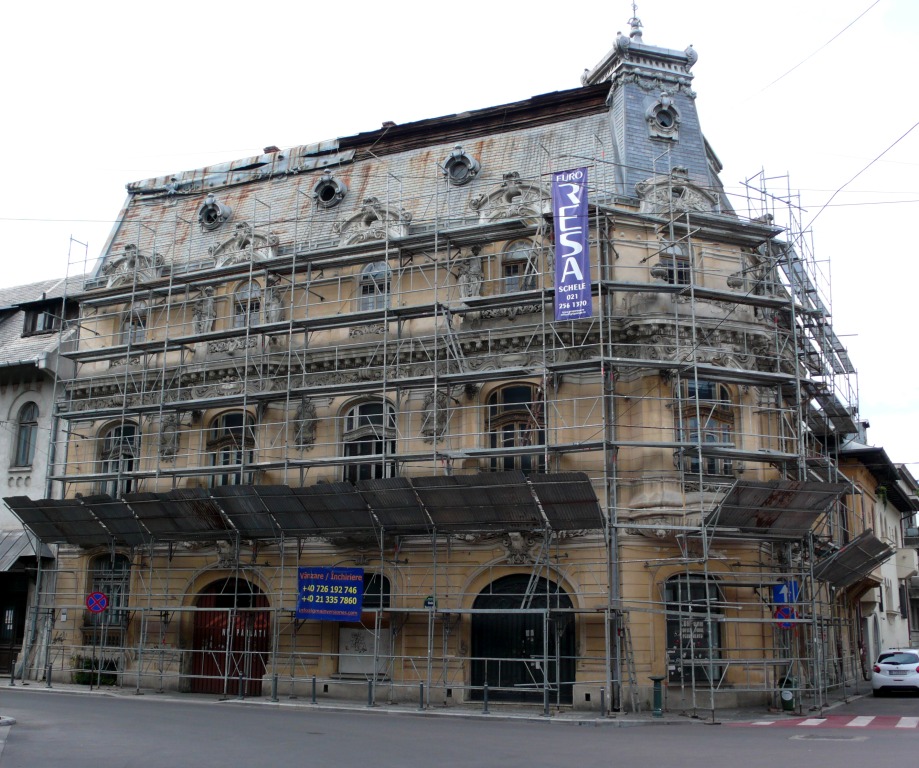
The house.
Because this sweet Miţa Biciclista was not that kind of sweet little woman. How to put this genteelly? Our heroine, Miţa, it seems, was a very good rider. Yes. Oh, yes. Very good, indeed.
In fact, she was so good at riding, she was invited to ride the king’s bike. And, it seems, she probably rode it several times. That’s apparently why King Ferdinand gave her this classic Baroque mansion in a great part of town.
(The house, by the way, which sits on a corner, is right across one street from the French Embassy, which seems appropriate somehow, and right across the other from a big church, which actually in some ways also seems appropriate.)

The church, Biserica Amzei.
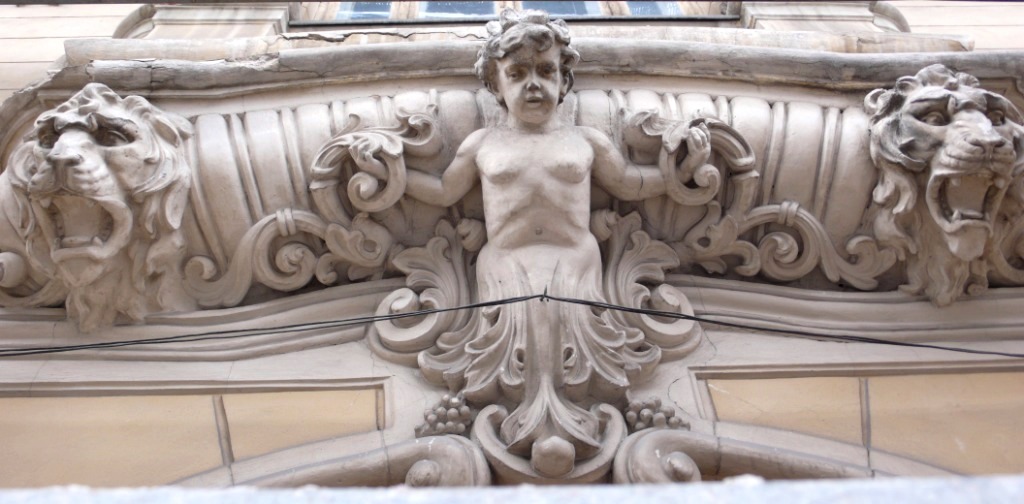 And Miţa didn’t stop there. She also is said to have ridden the bikes of many prominent men, including some very famous artist, a Nazi-sympathizing Prime Minister, and the Portuguese King Manuel, who asked her to marry. She was also said to be the first lover of King Leopold of Belgium. It seems these men all liked her bike riding very much.
And Miţa didn’t stop there. She also is said to have ridden the bikes of many prominent men, including some very famous artist, a Nazi-sympathizing Prime Minister, and the Portuguese King Manuel, who asked her to marry. She was also said to be the first lover of King Leopold of Belgium. It seems these men all liked her bike riding very much.
Yes, indeed. Miţa was some kind of woman. According to various things written about her, this daughter of a clothes washer, petite as she was with blonde hair and blue-green eyes, knew what she was about. She earned her nickname from a journalist who had fallen in love with her (if the dates are right, when she was 13 years old). She was also nicknamed Miţa Cotroceanca because of the gossip about her relationship with King Ferdinand, who lived at Cotroceni Palace here in town. Then in the 1940s, she married a general and eventually her finances began to suffer before she died in 1968 at the age of 85, presumably her bike-riding days well over.
And while, I suppose, she’s no Susan B. Anthony, she did make a mark on the history of this country. Consider this from a somewhat overly serious article in the Journal of Gender and Feminist Studies last year.
“…we can say that the functions and meanings of the bicycle get reconfigured through history, moving from means of transportation (18th century) to means of emancipation for women (20th century). As a consequence, in Romania we have Miţa Mihăescu, also known as Miţa Biciclista (Miţa the Cyclist). A controversial character of those times, Miţa the Cyclist becomes an exotic appearance in a society where the public/private – male/female dichotomy is strong, the public space being male dominated. Miţa the Cyclist is the first woman that pedaled wearing pants in Bucharest, breaking the social gender norms derived from riding a bicycle, and also through the outfit she chose to wear. I believe that Miţa’s deviations from the social norms were tolerated by the male dominant society thanks to the fact that she was a male chaperon, this label justifying her behavior to society. But still, in her case the bicycle was a symbol of emancipation, she was a woman that no longer depended on a man to travel in the public space, an independent woman that decided on her own the aspects of her life. A modern figure, Miţa was frequently mentioned in the Furnica magazine, thus certifying her modernity and the curiosity that she arose all around her, thus becoming the attraction of interbellum Bucharest.” [Some proofreading changes have been made to the original.]
Yet another writer described her this way:
“The bicycle with a silver handle belonged to a thin and elegant daughter of Eve, with black curls, silk purple tight pants, with a pinkish blouse that freed fluffy sleeves, with tall boots and white silk headgear, wrapped around in white veil, from which two large needles Madame Butterfly style arose.”
So yes, here she is, Miţa Biciclista. Not a national heroine, perhaps, but a Romanian woman we won’t soon forget. (Thank goodness.)
Indeed, I’m told by my wife that when she was a kid (not all that long ago), she often heard children shout out a rhyme (apparently, only when no parents were near). So now, all together, let’s sing it loud:
“Coana Mița biciclista
A căzut și și-a rupt pizda.”
Now, for any of you out there who have forgotten your Romanian, this translates literally to: “Madam Miţa the cyclist, fell down and broke her pussycat.” (Except her cat wasn’t there.)
Yes, indeed, perfect for kids. And anyway, in Romanian, it rhymes really well.
So now you know why I decided to write this. How could I not? What other woman do you know earns a nickname, a house, a plaque AND a dirty nursery rhyme just for riding a bike and leaving her cat at home? Ah, the good old days.
And where else but in Romania could you find such a plaque? In fact, how many other places would you find such a woman?



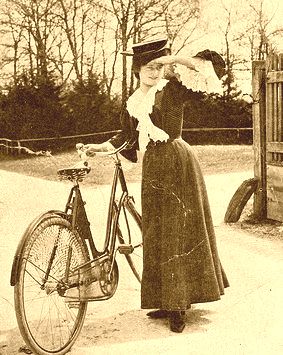

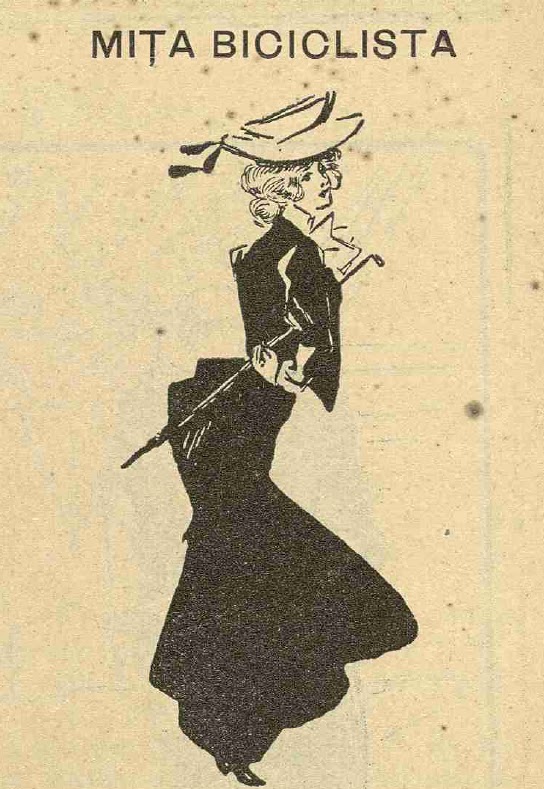
2 Comments
Well, apparently we, here în România, are all about feminism, aren’t we?! :)) Lovely and funny article.
Yes, indeed. And thank you.